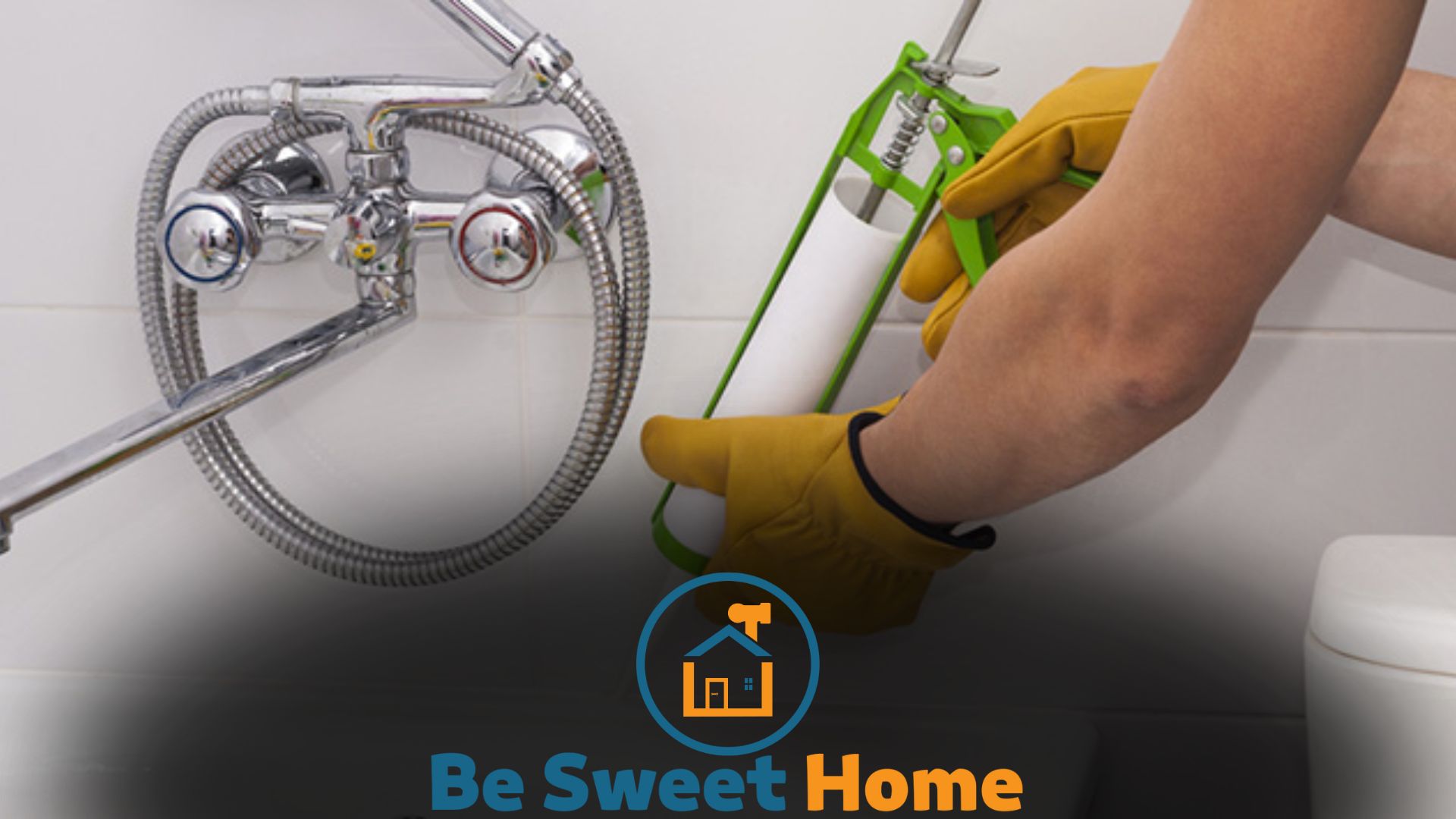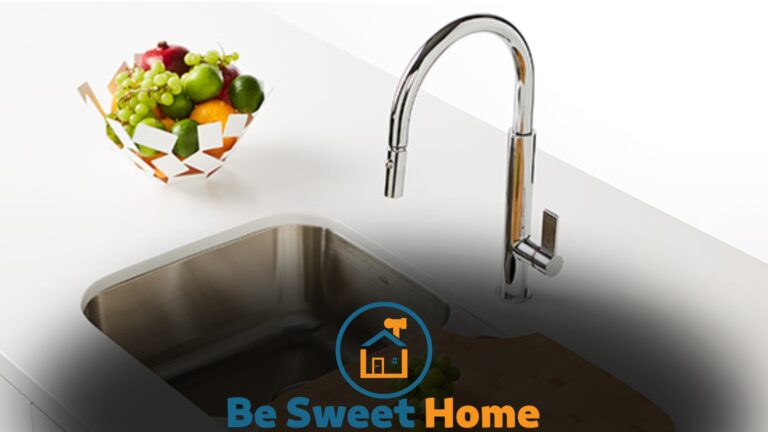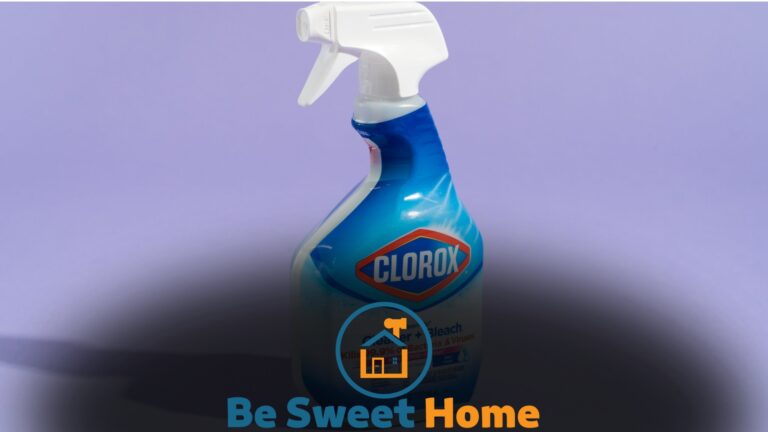

Bathroom sealant typically takes 24 to 48 hours to fully dry. Proper sealing is crucial in renovating or maintaining a bathroom to prevent water leaks and damage.
However, determining the right amount of time for the sealant to dry before using the bathroom again can be essential. Generally, bathroom sealant takes 24 to 48 hours to dry and set completely.
During this time, it is crucial to avoid any moisture exposure or use of the sealed area to ensure optimal results.
This drying period allows the sealant to form a watertight barrier that protects against water penetration, mold, and mildew buildup. Therefore, patience is key to achieving a long-lasting and effective bathroom seal.
Factors Affecting Drying Time
Bathroom sealant drying time can be influenced by various factors such as temperature, humidity, and the type of sealant used.
These factors can affect how long it takes for the sealant to fully dry and cure, so it’s important to consider them when applying sealant in the bathroom.
Temperature and Humidity
When it comes to bathroom sealant, drying time can vary depending on several factors. Two crucial elements that significantly impact the drying process are temperature and humidity.
Let’s delve into how these factors affect the drying time for bathroom sealant.
Temperature plays a vital role in the drying time of sealant. Generally, higher temperatures accelerate the drying process, while lower temperatures prolong it. When the temperature is warm, the molecules in the sealant expand and evaporate more rapidly, leading to quicker drying.
On the other hand, colder temperatures restrict molecular movement, causing the drying time to be lengthier. Therefore, it is essential to consider the temperature of your bathroom when applying sealant.
Humidity is another critical factor that influences the drying time of bathroom sealant. Humidity refers to the amount of moisture in the air. High humidity levels create a damp environment, making it challenging for sealant to dry effectively.
This is because the excess moisture in the air hinders the evaporation process. Conversely, low humidity levels facilitate faster drying since less ambient moisture needs to be evaporated.
Understanding the humidity conditions in your bathroom is crucial when determining the expected drying time of your sealant.
Type of Sealant
The type of sealant used also affects drying time. Sealants have different compositions and chemical properties, resulting in varied drying times. For instance, silicone-based sealants dry relatively quickly, usually within 24 to 48 hours, depending on the aforementioned factors.
On the other hand, acrylic sealants may require a longer drying time, often up to 72 hours or more. It is important to consult the manufacturer’s instructions for the specific sealant to determine the expected drying time.
Thickness of Application
The thickness of the sealant application is yet another factor that can impact drying time. Generally, thicker applications take longer to dry compared to thinner ones.
This is because a thicker layer of sealant requires more time for the inner molecules to evaporate and for the sealant to set fully. It is important to apply the sealant evenly and at the recommended thickness to ensure efficient drying.
Several factors can influence the drying time of bathroom sealant. Temperature and humidity levels, the type of sealant used, and the thickness of application all play a significant role.
By considering these factors and taking appropriate measures, you can ensure that your bathroom sealant dries efficiently, allowing you to enjoy a sealed and protected bathroom in no time.
| Factors Affecting Drying Time |
|---|
| Temperature and Humidity: Higher temperatures accelerate drying, while lower temperatures prolong it. High humidity creates a damp environment, hindering drying time, while low humidity facilitates faster drying. Type of Sealant: Different sealants have different drying times. Silicone-based sealants dry relatively quickly (24-48 hours), while acrylic sealants may require longer (72 hours or more). Thickness of Application: Thicker applications take longer to dry than thinner ones. Even a recommended thickness application ensures efficient drying. |
Quick-drying vs. Standard Sealants
When it comes to bathroom sealants, one of the key considerations is the drying time.
The choice between quick-drying and standard sealants depends on several factors, such as your project timeline, the type of application, and the desired longevity of the sealant’s performance.
Characteristics of Quick-drying Sealants
Quick-drying sealants are specially formulated to reduce the waiting time by accelerating the drying process. These sealants typically have a fast-setting formula that allows them to cure and dry within a shorter timeframe than standard sealants.
Here are some key characteristics of quick-drying sealants:
- Rapid drying time, usually within a few hours.
- Durable and long-lasting, providing good sealing properties.
- Offers excellent resistance to moisture and mold.
- Available in various types, such as silicone, acrylic, and polyurethane.
- Compatible with a wide range of bathroom surfaces, including tiles, glass, and ceramics.
Pros and Cons Of Quick-drying Sealants
Quick-drying sealants offer several advantages and disadvantages that you should consider before deciding. Here’s a breakdown of the pros and cons:
| Pros | Cons |
|---|---|
| Saves time and reduces the waiting period | Limited working time, requiring fast application |
| Faster completion of bathroom projects | Higher cost compared to standard sealants |
| Provides a quick waterproof seal | Provides a quick, waterproof seal |
| Suitable for urgent repairs or time-sensitive projects | Not ideal for large-scale or complex applications |
Application Tips for Quick-drying Sealants
To ensure optimal results when using quick-drying sealants, here are some application tips to keep in mind:
- Clean the surface thoroughly to remove dirt, debris, or old sealant.
- Follow the manufacturer’s instructions regarding preparation and application techniques.
- Use a caulking gun for precise and controlled dispensing of the sealant.
- Smooth out the sealant immediately after application to achieve an even finish.
- Avoid exposing the sealant to water or moisture until it has fully cured.
By understanding the characteristics, pros, and cons of quick-drying sealants and utilizing the right application techniques, you can make an informed decision and achieve a successful bathroom sealing project.
Drying Times for Different Types of Sealants
When sealing your bathroom, choosing the right type of sealant is important. Not only does it need to provide a watertight seal, but it should also dry quickly and efficiently. The drying time of sealants can vary depending on the sealant used.
In this article, we will explore the drying times for different types of sealants: silicone sealants, polyurethane sealants, acrylic sealants, and epoxy sealants.
Silicone Sealants
Silicone sealants are one of the most popular choices for bathroom sealing due to their flexibility and durability. They are also known for their relatively fast drying time.
On average, silicone sealants typically take around 24 hours to dry completely. However, it is important to note that this can vary depending on factors such as temperature, humidity, and the thickness of the application.
It is recommended to check the packaging or consult the manufacturer for specific drying time instructions.
Polyurethane Sealants
Polyurethane sealants are known for their excellent adhesion and resistance to moisture. Their drying time, however, is longer compared to silicone sealants.
On average, polyurethane sealants can take anywhere between 48 to 72 hours to fully dry.
The longer drying time is due to their chemical composition and the need for a complete curing process. It is crucial to allow sufficient drying time before exposing the sealed areas to water or other elements.
Acrylic Sealants
Acrylic sealants are affordable and easy to use, making them popular for bathroom sealing. They offer good water resistance and can be painted over once dry. Regarding drying time, acrylic sealants usually take 24 to 48 hours to dry completely.
However, like other sealants, environmental factors can impact the drying process. It is advisable to allow ample time for drying before exposing the sealed areas to moisture.
Epoxy Sealants
Epoxy sealants are known for their high strength and chemical resistance. They are commonly used in areas that require strong and durable sealing, such as tiled surfaces.
Regarding drying time, epoxy sealants can take longer than other sealant types. Epoxy sealants may take 48 to 72 hours to fully dry and cure.
Following the manufacturer’s instructions carefully and allowing sufficient drying time is essential to ensure proper sealing and long-lasting results.
| Sealant Type | Average Drying Time |
|---|---|
| Silicone Sealants | 24 hours |
| Polyurethane Sealants | 48-72 hours |
| Acrylic Sealants | 24-48 hours |
| Epoxy Sealants | 48-72 hours |
When applying any sealant in your bathroom, it is important to allow sufficient drying time to ensure a proper and effective seal.
Remember to consider the specific instructions provided by the manufacturer and the environmental conditions in your bathroom.
Following these guidelines can achieve a long-lasting and watertight seal in your bathroom.
Accelerating the Drying Process
Bathroom sealant is essential in keeping your bathroom clean and free from water damage. Once applied, the sealant needs time to dry and fully set to provide maximum effectiveness.
The drying time can vary depending on factors such as the type of sealant used, the humidity levels in your bathroom, and the temperature.
Generally, silicone-based sealants take around 24 to 48 hours to dry fully, but it is important to note that this can sometimes be longer.
Using Ventilation and Airflow
Improving ventilation and airflow in your bathroom can significantly speed up the drying process of bathroom sealant. When you open a window or use exhaust fans, fresh air can circulate within the room, helping the moisture to evaporate faster.
This quickens the drying time and reduces the chance of mold or mildew growth, ensuring a clean and dry environment.
Applying Heat
An effective method to accelerate the drying process of bathroom sealant is by applying heat. Using a hairdryer on low to medium heat lets you direct warm air onto the sealant, helping the moisture evaporate quickly.
Remember to keep the hairdryer a safe distance from the sealant to avoid damaging it and causing it to melt.
Using Drying Agents
Drying agents, such as a desiccant or a moisture absorber, can be placed near the freshly sealed areas to remove excess moisture from the environment. These agents absorb the moisture, leaving the sealant to dry faster.
However, it is essential to follow the instructions provided by the manufacturer to ensure optimal usage and safety.
Tips for Safe and Effective Acceleration
- Avoid touching or disturbing the freshly applied sealant during drying to prevent any uneven drying or damage.
- Ensure the bathroom temperature remains within the recommended range on the sealant packaging. Extreme temperatures can affect the drying time and effectiveness of the sealant.
- Check the humidity levels in your bathroom, as high humidity can prolong the drying time. Using a dehumidifier can help to reduce the overall humidity in the room.
- If your bathroom has limited natural ventilation, consider using a fan or opening windows in other areas of your home to create cross-ventilation.
Accelerating the drying process of bathroom sealant can help you quickly complete your bathroom renovation or repair project.
You can significantly shorten the drying time by using ventilation and airflow, applying heat, and utilizing drying agents.
Remember to follow these tips for safe and effective acceleration, ensuring your bathroom sealant dries thoroughly for long-lasting protection.
Factors to Consider After Application
After applying bathroom sealant, it is important to consider the drying time. This can vary depending on factors such as humidity, temperature, and the type of sealant used. However, bathroom sealant typically takes around 24 hours to dry completely.
After applying bathroom sealant, it is essential to consider various factors affecting how long it takes to dry. These factors ensure the sealant cures properly, providing a durable and watertight bond.
Understanding the considerations after application will help determine the surface curing time and the full cure time of the sealant.
Surface Curing vs. Full Cure
Surface curing and full cure are two different stages of the drying process for bathroom sealants, each with its characteristics.
Surface curing refers to the outer layer of the sealant forming a skin-like texture, which is dry to the touch. It occurs relatively quickly, usually within 30 minutes to a few hours, depending on the sealant type and environmental conditions.
The sealant may appear dry at this stage, but it is important to note that it hasn’t fully cured internally.
Full cure, on the other hand, refers to the complete drying of the sealant throughout its entire thickness.
This stage takes longer, from 24 hours to several days, depending on the sealant composition, thickness, ambient temperature, humidity levels, and ventilation.
Recommended Curing Time for Sealants
While the surface may cure relatively quickly, it is crucial to follow the manufacturer’s recommendations for full cure time.
These recommendations are typically provided on the product label or packaging and may vary depending on the specific sealant brand and type.
For instance, a silicone-based sealant may require 24 to 48 hours for full cure, while an acrylic-based sealant may need 48 to 72 hours.
It is worth noting that these are general guidelines, and certain sealants might have longer recommended curing times. Always refer to the manufacturer’s instructions for the most accurate information.
Tips for Ensuring Proper Curing
To ensure the bathroom sealant cures properly, consider the following tips:
- Allow sufficient curing time: Give the sealant ample time to fully cure before exposing it to moisture or other stressors. Rushing the process may result in a weakened bond and compromised effectiveness.
- Maintain optimal temperature and humidity: Ensure the bathroom is adequately ventilated and maintained within the manufacturer’s recommended temperature range. High humidity levels can delay the curing process.
- Avoid excessive moisture: Prevent water from contacting the sealant during curing. This includes avoiding showering or using the bathtub near freshly applied sealant.
- Check sealant thickness: Thicker layers of sealant may require additional curing time. If you have applied a thicker bead of sealant, consider extending the curing period accordingly.
- Inspect for completeness: Once the recommended cure time has passed, check the sealant for any signs of stickiness or tackiness. If it still feels uncured, provide additional time for drying.
By considering these factors and following the recommended curing time for your specific bathroom sealant, you can ensure that it dries properly, provides an effective barrier against moisture, and extends the lifespan of your bathroom fixtures.
Conclusion
The drying time of bathroom sealant can vary depending on several factors, such as the type of sealant used and the environmental conditions.
It is essential to allow sufficient time for the sealant to dry completely before using the bathroom again.
Following the manufacturer’s instructions and ensuring proper ventilation, you can ensure a successful seal that will protect your bathroom for years.
Remember, patience is key to achieving a long-lasting and effective seal.







